For the first 12 years of the time I participated in (mandatory) public education, I was denied permission to wear pants to school. The dress code required that I (labeled “a girl” at birth) wear a dress. It was the law – I was a girl and I had to wear the clothes that allowed for easy identification of my label.
I was a student at an elementary school in Seattle from kindergarten to third grade. Parts of the playground were segregated. The younger children had a co-ed playground with a slide, hanging bars, etc. The recess areas for the older children were divided into the girls’ playground and the boys’ playground. The girls were situated on the asphalt next to the school. We had four-square, hopscotch, and tetherball. Boys were permitted on the girls’ playground, but that rarely occurred.
The boys controlled a dirt and gravel lot. It was much larger space, occupying the whole south side of the playgrounds, extended out to the edges of the school property. To my young mind, the boys’ playground seemed dangerous – a place where a person could get hurt. The boys played tag, baseball, and other field games. Sometimes they got dirty and sometimes got in trouble for it. Girls never got dirty. No girls ever entered the boys’ playground. We all followed the rules back in that day. We all knew our places.
This systematic distribution of privilege was reinforced when I learned that “he” was the universal pronoun that included both females and males. If the gender of an individual was uncertain, we must always defer to the masculine. It was embedded in the language – police man, mail man, fire man, it was portrayed in our Dick and Jane readers where men were doctors and women were nurses. It was enforced on the playground. It was mandated in the type of clothing I was required to wear.
And what is gender assignment of this type? It is a form of otherising.
Edward Said wrote about Orientalism, and the concept of otherising. Said identified the patronizing and self-aggrandizing identification of the colonial masters as superior, which allowed them to justify/rationalize their domination and subjugation of indigenous people. Middle Eastern people were stereotyped as “Orientals” who were sneaky, exotic, and unethical. The (white male Christian) colonizers kept for themselves those attributes of human personality that then justified their mastery of inferior others – they were better - open, normal, and honest. In other regions, indigenous people have been labeled heathen, dirty, lazy, child-like, and so forth. These traits form a dichotomous sort, with the privileged class on the left and the abject class on the right. Figure 1 is a dichotomous sort drawn on Said’s concept of Orientalism.
I was a student at an elementary school in Seattle from kindergarten to third grade. Parts of the playground were segregated. The younger children had a co-ed playground with a slide, hanging bars, etc. The recess areas for the older children were divided into the girls’ playground and the boys’ playground. The girls were situated on the asphalt next to the school. We had four-square, hopscotch, and tetherball. Boys were permitted on the girls’ playground, but that rarely occurred.
The boys controlled a dirt and gravel lot. It was much larger space, occupying the whole south side of the playgrounds, extended out to the edges of the school property. To my young mind, the boys’ playground seemed dangerous – a place where a person could get hurt. The boys played tag, baseball, and other field games. Sometimes they got dirty and sometimes got in trouble for it. Girls never got dirty. No girls ever entered the boys’ playground. We all followed the rules back in that day. We all knew our places.
This systematic distribution of privilege was reinforced when I learned that “he” was the universal pronoun that included both females and males. If the gender of an individual was uncertain, we must always defer to the masculine. It was embedded in the language – police man, mail man, fire man, it was portrayed in our Dick and Jane readers where men were doctors and women were nurses. It was enforced on the playground. It was mandated in the type of clothing I was required to wear.
And what is gender assignment of this type? It is a form of otherising.
Edward Said wrote about Orientalism, and the concept of otherising. Said identified the patronizing and self-aggrandizing identification of the colonial masters as superior, which allowed them to justify/rationalize their domination and subjugation of indigenous people. Middle Eastern people were stereotyped as “Orientals” who were sneaky, exotic, and unethical. The (white male Christian) colonizers kept for themselves those attributes of human personality that then justified their mastery of inferior others – they were better - open, normal, and honest. In other regions, indigenous people have been labeled heathen, dirty, lazy, child-like, and so forth. These traits form a dichotomous sort, with the privileged class on the left and the abject class on the right. Figure 1 is a dichotomous sort drawn on Said’s concept of Orientalism.
Figure 1.
In 1885, in A Child’s Garden of Verses, British author Robert Louis Stevenson wrote about “Foreign Children”:
Little Indian, Sioux, or Crow,
Little frosty Eskimo,
Little Turk or Japanee,
Oh! don’t you wish that you were me?
You have seen the scarlet trees
And the lions over seas;
You have eaten ostrich eggs,
And turned the turtle off their legs.
Such a life is very fine,
But it’s not so nice as mine:
You must often as you trod,
Have wearied NOT to be abroad.
You have curious things to eat,
I am fed on proper meat;
You must dwell upon the foam,
But I am safe and live at home.
Little Indian, Sioux or Crow,
Little frosty Eskimo,
Little Turk or Japanee,
Oh! don’t you wish that you were me?
Little Indian, Sioux, or Crow,
Little frosty Eskimo,
Little Turk or Japanee,
Oh! don’t you wish that you were me?
You have seen the scarlet trees
And the lions over seas;
You have eaten ostrich eggs,
And turned the turtle off their legs.
Such a life is very fine,
But it’s not so nice as mine:
You must often as you trod,
Have wearied NOT to be abroad.
You have curious things to eat,
I am fed on proper meat;
You must dwell upon the foam,
But I am safe and live at home.
Little Indian, Sioux or Crow,
Little frosty Eskimo,
Little Turk or Japanee,
Oh! don’t you wish that you were me?
Figure 2.
I will leave it to the reader to deconstruct this poem. When I first heard it read to me at around the age of five, I took it as ironic, but while in grad school, when I shared with friends from other lands, they heard oppression and racism. The barely clothed Native American (far right child in Figure 2) in the related drawing by Jesse Wilcox Smith provokes the question: Who dresses like that? A hypothetical creature, a construct. Figures 3, 4, and 5 present some alternative images for Native America children.
Figures 3, 4, and 5.
The concept of otherizing helps explain the construction of gender. Figure 6 represents some of the commonly held beliefs about the attributes of the two genders.
Figure 6.
The true nature of human attributes is quite different. Any individual, regardless of gender, can have more or less of a certain human attribute, whether it is being interruptive compared to being a listener or whether it is being a leader versus being a follower. Figures 7, 8, and 9 analyze five attributes as continuums. The self-described characteristics of the author are provided as an example of one particular human being, depicted in bold red in figure 9.
Figure 7.
Figure 8.
Figure 9.
I have not cooperated with my gender assignment. It seemed arbitrary to me at an early age. As I made my way in the word, I have resisted male hegemony, patriarchy.
Queer theory provides answers.
Additional reading:
wikipedia.org/wiki/Edward_Said
wikipedia.org/wiki/Orientalism
wikipedia.org/wiki/Queer_theory
Queer theory provides answers.
Additional reading:
wikipedia.org/wiki/Edward_Said
wikipedia.org/wiki/Orientalism
wikipedia.org/wiki/Queer_theory
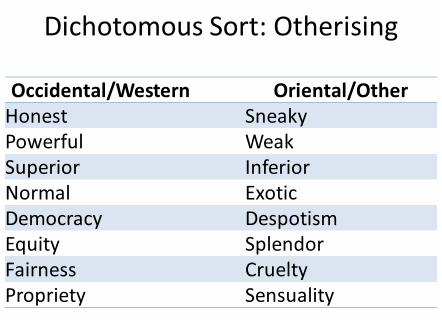
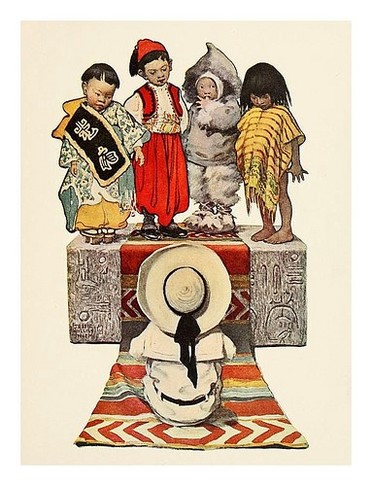
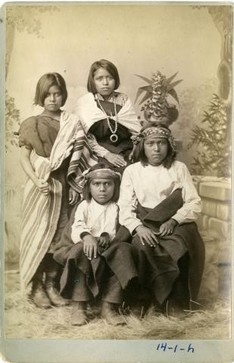
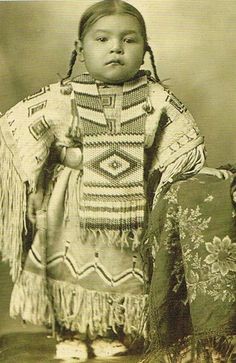
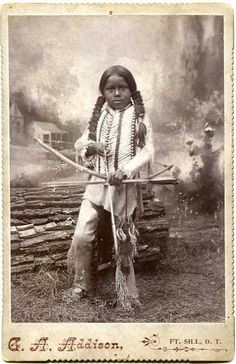
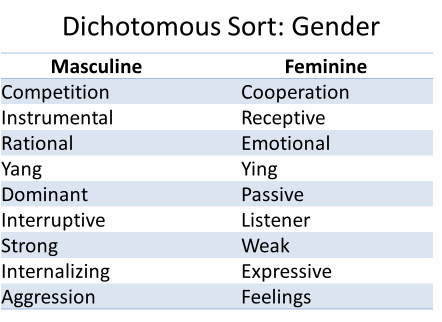
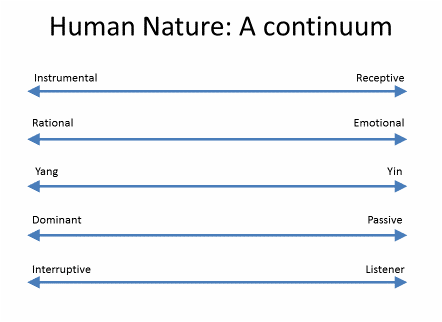
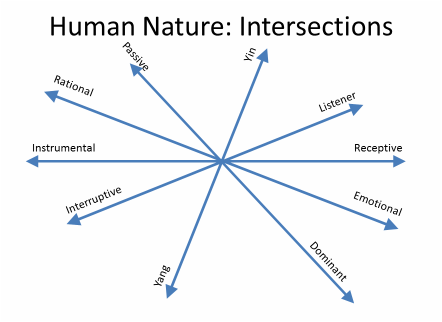
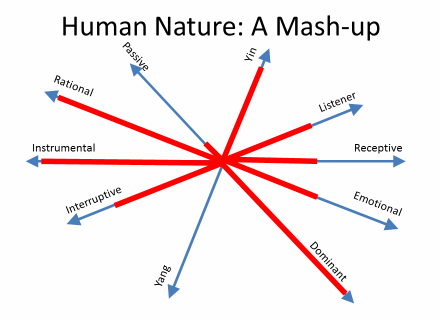
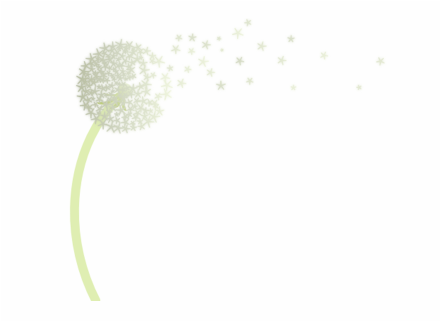
 RSS Feed
RSS Feed